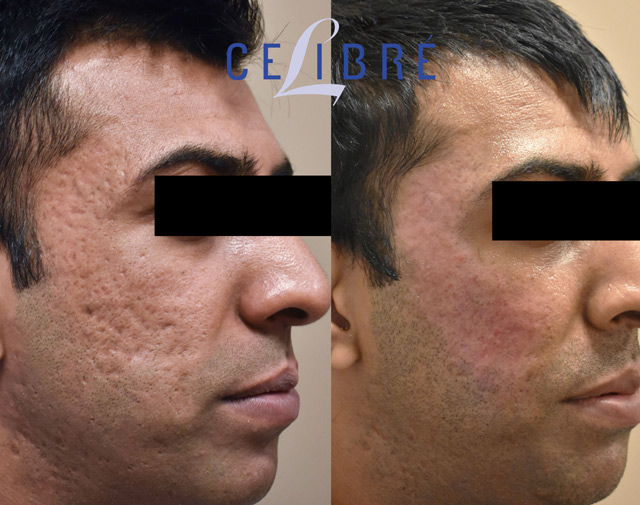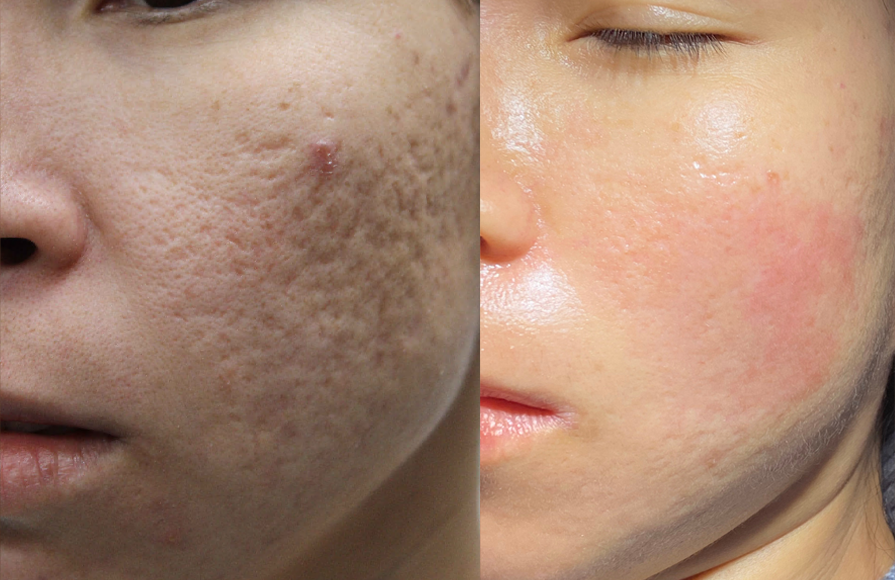Efficient Solutions for Acne Scars: Just How to Attain More Clear Skin
Efficient Solutions for Acne Scars: Just How to Attain More Clear Skin
Blog Article
Exploring Skin Problems: Treating and recognizing Acne Scars for Healthier Skin
Acne scars stand for a substantial worry for individuals seeking to keep healthy and balanced skin, as they can impact both appearance and self-esteem. Recognizing the different types of scars, from atrophic to hypertrophic, is crucial for establishing ideal treatment options.
Recognizing Acne Marks

The body's natural recovery procedure can lead to either atrophic scars, which look like depressions in the skin, or hypertrophic scars, which are raised and arise from overproduction of collagen. In addition, the mental toll of acne marks must not be undervalued; many people report sensations of humiliation, anxiousness, and lowered self-worth. This emotional worry can impact social interactions and general lifestyle.
Dealing with acne marks requires a detailed understanding of their development and impact. Recognition of the capacity for lasting repercussions associated with unattended scars can encourage individuals to look for appropriate treatments. Early intervention and reliable administration approaches can dramatically enhance skin look and boost emotional durability, emphasizing the importance of understanding the intricacies bordering acne marks.
Kinds of Acne Scars
Acne scars can be categorized right into distinctive kinds, each displaying special attributes and needing particular treatment approaches. acne scars. The key types of acne marks include atrophic, hypertrophic, and keloid scars

Hypertrophic marks, in contrast, are increased over the skin level and are the result of too much collagen production during the recovery procedure. They normally remain within the limits of the initial acne lesion. Keloid scars are comparable but extend past the initial injury site, developing bigger, elevated areas that can be uncomfortable or scratchy.
Understanding these kinds of marks is essential for selecting proper therapy options. Different marks might react better to certain treatments, such as laser treatments, fillers, or surgical treatments, stressing the value of a customized method to acne mark monitoring.
Recognizing Your Scars
Acne scars usually drop into two classifications: hypertrophic and atrophic scars. These can additionally be identified into ice-pick marks, boxcar scars, and rolling scars, each exhibiting unique features and requiring different methods for evaluation.
Hypertrophic marks, on the various other hand, are raised and occur because of extreme collagen manufacturing throughout the recovery procedure. Recognizing the specific functions of your scars-- such as depth, structure, and width-- is necessary for correct recognition (skin rejuvenation treatments). Additionally, consider the circulation of marks throughout your skin, as this can show the intensity and period of the acne condition
Engaging with a skin specialist can offer important insights into the nature of your scars, assisting in the distinction in between various types. A comprehensive understanding of your scars will ultimately bring see this here about a more customized and reliable therapy plan, guaranteeing a clearer and much healthier skin.
Therapy Choices Offered
Recognizing the certain type of acne scars present on your skin prepares for exploring reliable therapy choices. Typical sorts of acne marks consist of atrophic (depressed), hypertrophic (raised), and post-inflammatory erythema.
For atrophic scars, options such as chemical peels, microneedling, and laser resurfacing are widely used. Chemical peels make my explanation use of acids to get rid of the outer layer of skin, promoting brand-new cell growth. Microneedling involves little needles that produce micro-injuries, stimulating collagen manufacturing. Laser resurfacing targets damaged skin cells, boosting structure and tone.
Hypertrophic scars can be treated with corticosteroid shots to flatten the mark or laser therapy to lower inflammation and boost appearance. Silicone gel sheets and stress dressings may likewise assist in taking care of increased scars.
In enhancement, dermal fillers can temporarily load in anxieties from atrophic scars, while surgical excision may be suitable for serious cases. Each treatment choice has its advantages and considerations, making it crucial to talk to a dermatologist. They can give tailored recommendations based upon the kind and severity of your scars, in addition to your skin kind and overall health and wellness.
Tips for Avoidance
Reliable avoidance approaches can significantly reduce the likelihood of developing acne scars. Using non-comedogenic products helps prevent blocked pores, which can worsen acne.
Preventing need to select or pop acne sores is crucial, as this can result in deeper skin damage and raise the risk of scarring. Instead, take into consideration making use of a chilly compress or non-prescription therapies to minimize swelling and inflammation.
Sun protection is an additional essential facet of avoidance; ultraviolet (UV) rays can darken scars and hinder the recovery procedure. Using a broad-spectrum sunscreen with at least SPF 30 daily can protect the skin and advertise also healing.
Lastly, maintaining a well balanced diet rich in vitamins, anti-oxidants, and minerals sustains skin health and wellness and recovery. Staying hydrated and managing stress levels can additionally play a significant duty in decreasing acne flare-ups. By executing these strategies, people can considerably decrease their possibilities of her explanation establishing acne marks.
Conclusion
In conclusion, understanding and determining acne scars is crucial for effective therapy and achieving much healthier skin. Various kinds of acne scars, consisting of atrophic and hypertrophic marks, necessitate certain treatments tailored to specific needs. Therapy options variety from chemical peels and microneedling to corticosteroid shots, emphasizing the relevance of getting in touch with a skin specialist. Additionally, embracing a mild skincare regimen and shielding the skin from UV exposure can considerably add to the prevention of more scarring and total skin health.
The body's all-natural recovery procedure can result in either atrophic marks, which show up as depressions in the skin, or hypertrophic scars, which are raised and result from overproduction of collagen. They are further divided into three subtypes: ice pick marks, boxcar marks, and rolling marks. Acne scars typically fall into two categories: atrophic and hypertrophic scars. These can further be classified into ice-pick marks, boxcar marks, and rolling marks, each displaying unique attributes and needing different techniques for evaluation.
Different types of acne marks, consisting of hypertrophic and atrophic marks, demand certain treatments tailored to individual demands.
Report this page